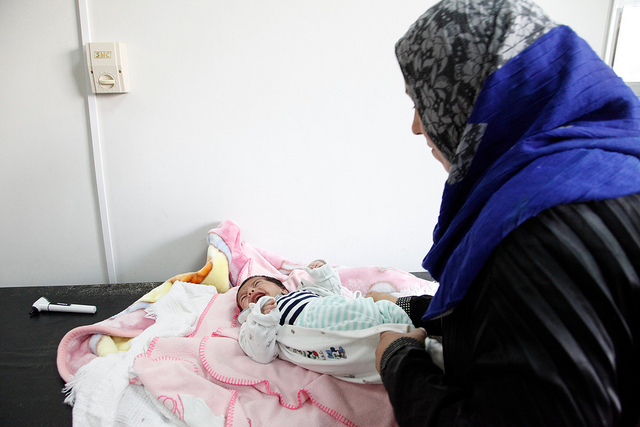Originally published on Devex. By Ariel Pablos-Méndez, Robert Clay.
The humanitarian crisis in South Sudan is contributing to severe health service delivery challenges: It impedes access to already highly vulnerable populations, slows delivery of medical supplies and drugs, and exacerbates shortages of health workers. Those fleeing the violence are also affected. For example, of the more than 400,000 South Sudanese refugees in northern Uganda, more than 60 percent are women and children under 5.
While the conflicts in South Sudan, Syria, and elsewhere are well-known, they are not unique. According to the U.N. refugee agency there are more than 65 million forcibly displaced people globally. By population this would be the 21st largest country in the world, according to a new report from Save the Children.
To reach the ambitious Sustainable Development Goal for health, including reproductive, maternal, newborn, child, and adolescent health, we must make humanitarian settings a high priority, because populations in these contexts shoulder a high burden of need and vulnerability.
In a humanitarian crisis, pregnant women and women who have recently delivered must overcome immense obstacles to provide care and safety for their children. At the same time, women’s vulnerability to malnutrition, sexual violence, and unplanned pregnancy increases; and so do the risks related to unassisted childbirth.
Newborns — babies in the first 28 days of life — are especially vulnerable. Nearly half of newborn deaths occur in the first 24 hours after birth. Without appropriate support and supplies, and counseling to facilitate breast-feeding, a newborn’s condition can deteriorate within minutes or hours.
The U.N. Commission on Lifesaving Commodities has identified four low-cost commodities for newborn care that, if made available at scale, would have the greatest impact in reducing preventable deaths. These include: injectable antibiotics for severe infection, antenatal corticosteroids to help preterm lung development, chlorhexidine for umbilical cord hygiene, and a neonatal-sized bag and mask for resuscitation.
Health services implemented in humanitarian settings usually include prepackaged kits for reproductive, maternal, and child health. However, we need to redouble efforts to ensure that essential supplies for newborn care are included in these kits — with appropriate doses of certain medicines, supplies, and newborn-sized devices.
To help address this critical gap, Save the Children, as a member of an interagency group, collaborated to develop the “Newborn Health in Humanitarian Settings: Field Guide.” The guide prioritizes the most critical health services and supplies to prevent and manage the main causes of newborn death.
In South Sudan and Somalia, a training curriculum was developed and costed, complemented by three kits of newborn-appropriate medicines and equipment, each designed for specific settings: community care, primary-level clinics, and hospitals. UNHCR has developed complementary guidelines specific to refugees, and these are being tested in camps in South Sudan, Kenya and Jordan. Learning from both studies will inform revisions of the “Inter-agency Field Manual on Reproductive Health in Humanitarian Settings.” This work is of particular relevance to USAID: Of 25 priority countries, 18 are on the list of fragile states compiled by the Organization for Economic Cooperation and Development.
To effectively implement the 2030 Agenda and realize the SDGs, we must continue to support efforts such as these to reach the most vulnerable populations in these especially challenging environments. Organizations working in complex humanitarian situations should review their ongoing and planned activities to ensure that every program and package includes essential newborn care messages and best-practices (such as support for early and exclusive breast-feeding), that trainings cover maternal newborn health issues, and that supply kits include newborn-specific equipment and medicines appropriate to the setting.
About the authors

Dr. Ariel Pablos-Mendez is the assistant administrator for global health at the U.S. Agency for International Development, a position he assumed in 2011. Prior, Pablos-Méndez served as managing director at the Rockefeller Foundation, where he led its global health strategy on the transformation of health systems in Africa and Asia. He also served as director of knowledge management at the World Health Organization in Geneva, where he established WHO’s first eHealth unit. Pablos-Méndez is a board-certified internist.

Robert Clay, vice president for global health at Save the Children, is a leader in global health with more than 33 years’ experience in development. Prior to joining Save the Children, Robert was deputy assistant administrator in the Bureau for Global Health at the U.S. Agency for International Development, where he focused on increasing program integration and technical excellence.
